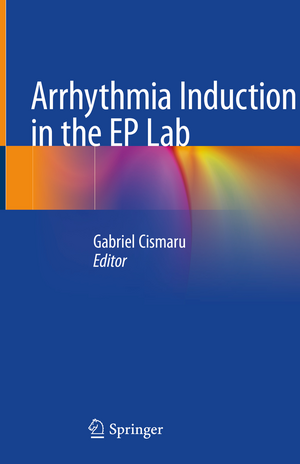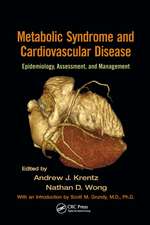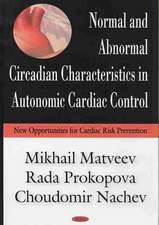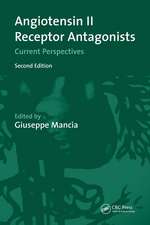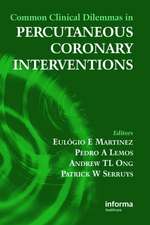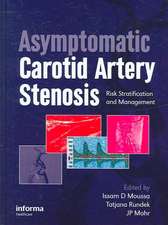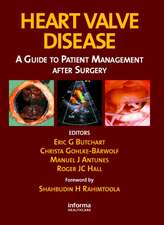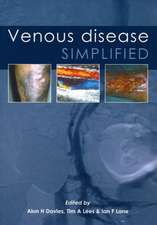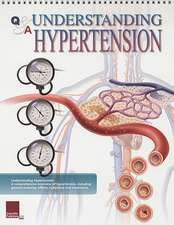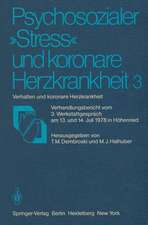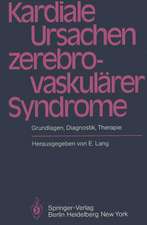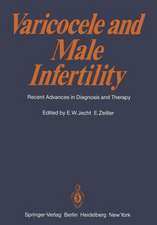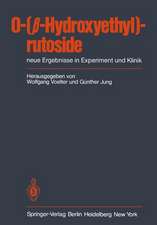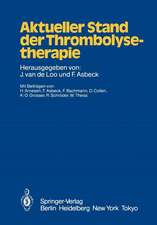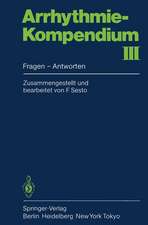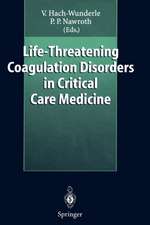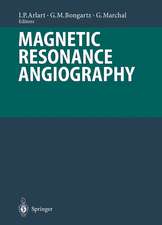Arrhythmia Induction in the EP Lab
Editat de Gabriel Cismaruen Limba Engleză Hardback – 17 ian 2019
Each chapter begins with a description of the drug’s chemical structure and mechanism of actions, then illustrates the infusion preparation, dosage and side effects and lastly analyzes its electrophysiological properties and highlights the most important clinical studies on it. For each drug the authors list – in dedicated tables – administration protocols from their own hospital. This book is of interest to postgraduate students, cardiology residents, cardiologists and pediatric cardiologists with special interest in arrhythmias, as well as to trainees, technicians and nurses involved in the EP lab.
Preț: 662.05 lei
Preț vechi: 696.89 lei
-5% Nou
Puncte Express: 993
Preț estimativ în valută:
126.70€ • 137.58$ • 106.43£
126.70€ • 137.58$ • 106.43£
Carte tipărită la comandă
Livrare economică 18-24 aprilie
Preluare comenzi: 021 569.72.76
Specificații
ISBN-13: 9783319927282
ISBN-10: 3319927280
Pagini: 250
Ilustrații: IX, 228 p. 138 illus., 131 illus. in color.
Dimensiuni: 155 x 235 mm
Greutate: 0.59 kg
Ediția:1st ed. 2019
Editura: Springer International Publishing
Colecția Springer
Locul publicării:Cham, Switzerland
ISBN-10: 3319927280
Pagini: 250
Ilustrații: IX, 228 p. 138 illus., 131 illus. in color.
Dimensiuni: 155 x 235 mm
Greutate: 0.59 kg
Ediția:1st ed. 2019
Editura: Springer International Publishing
Colecția Springer
Locul publicării:Cham, Switzerland
Cuprins
1 Introduction: Why do we need arrhythmia induction.- 2 Isoprenaline.- 3 Adrenaline.- 4 Atropine.- 5 Salbutamol.- 6 Caffeine.- 7 Adenosine.- 8 Dobutamine.- 9 Dopamine.- 10 Noradrenaline.- 11 Aminophylline.- 12 Inducibility of ventricular fibrillation with flecainide and ajmaline during programmed ventricular stimulation in patients with Brugada syndrome.- 13 What to do when clinical arrhythmia is uninducible. Stepwise approach.
Notă biografică
Dr. Cismaru Gabriel earned his MD degree in 2005 from the “Iuliu Hatieganu” University of Medicine and Pharmacy, Cluj-Napoca (Romania) and received his PhD in medicine in 2016 from the same university. During residency he trained in cardiology and invasive cardiology at CHU Clermont-Ferrand France and CH Dinan (France). After completing his residency in cardiology, Dr. Cismaru began his electrophysiology fellowship at the Insitut Lorrain du Coeur et des Vaisseaux Louis Mathieu, Nancy-France. In 2011 he started working at the Electrophysiology Laboratory of the Rehabilitation Hospital Cluj-Napoca. He currently performs catheter ablation for simple cardiac arrhythmias, like atrial flutter, supraventricular tachycardias and WPW syndrome, but also for complex arrhythmias: atrial fibrillation, ventricular tachycardia and ventricular fibrillation.
His main research interests are: arrhythmias, catheter ablation of atrial fibrillation and ventricular tachycardia, pacemaker and internal defibrillator implantation. He has authored or coauthored peer-reviewed articles on cardiac arrhythmias, electrophysiology and catheter ablation. He is co-author of a number of book chapters and editor of following 2 books in the field of electrophysiology: Bedside Procedures and Brugada Syndrome.
His main research interests are: arrhythmias, catheter ablation of atrial fibrillation and ventricular tachycardia, pacemaker and internal defibrillator implantation. He has authored or coauthored peer-reviewed articles on cardiac arrhythmias, electrophysiology and catheter ablation. He is co-author of a number of book chapters and editor of following 2 books in the field of electrophysiology: Bedside Procedures and Brugada Syndrome.
Textul de pe ultima copertă
This book focuses on how to induce clinical arrhythmias in the electrophysiology (EP) laboratory, a procedure that is indispensable for analyzing the underlying mechanisms, and identifying the most effective treatment of the arrhythmia. In the main part of the book, the authors share their own experiences with 13 different medications that can be injected or infused for arrhythmia induction – ranging from isoprenaline and atropine to ephedrine – all of which can be easily found in any cardiology department.
Each chapter begins with a description of the drug’s chemical structure and mechanism of actions, then illustrates the infusion preparation, dosage and side effects and lastly analyzes its electrophysiological properties and highlights the most important clinical studies on it. For each drug the authors list – in dedicated tables – administration protocols from their own hospital.
This book is of interest to postgraduate students, cardiology residents, cardiologists and pediatric cardiologists with special interest in arrhythmias, as well as to trainees, technicians and nurses involved in the EP lab.
Each chapter begins with a description of the drug’s chemical structure and mechanism of actions, then illustrates the infusion preparation, dosage and side effects and lastly analyzes its electrophysiological properties and highlights the most important clinical studies on it. For each drug the authors list – in dedicated tables – administration protocols from their own hospital.
This book is of interest to postgraduate students, cardiology residents, cardiologists and pediatric cardiologists with special interest in arrhythmias, as well as to trainees, technicians and nurses involved in the EP lab.
Caracteristici
Practical guide entirely devoted to arrhythmia induction in the EP lab Provides tips and tricks to overcome the issue of uninducible arrhythmias Authors share experiences and administration protocols from their own hospital Clearly summarizes side-effects and contraindications in dedicated charts
